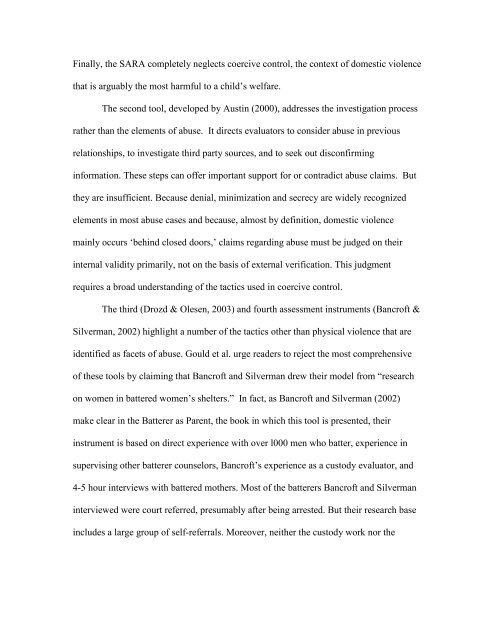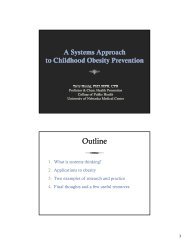Rethinking Child Custody, Domestic Violence - Rutgers NJAES ...
Rethinking Child Custody, Domestic Violence - Rutgers NJAES ...
Rethinking Child Custody, Domestic Violence - Rutgers NJAES ...
You also want an ePaper? Increase the reach of your titles
YUMPU automatically turns print PDFs into web optimized ePapers that Google loves.
Finally, the SARA completely neglects coercive control, the context of domestic violencethat is arguably the most harmful to a child’s welfare.The second tool, developed by Austin (2000), addresses the investigation processrather than the elements of abuse. It directs evaluators to consider abuse in previousrelationships, to investigate third party sources, and to seek out disconfirminginformation. These steps can offer important support for or contradict abuse claims. Butthey are insufficient. Because denial, minimization and secrecy are widely recognizedelements in most abuse cases and because, almost by definition, domestic violencemainly occurs ‘behind closed doors,’ claims regarding abuse must be judged on theirinternal validity primarily, not on the basis of external verification. This judgmentrequires a broad understanding of the tactics used in coercive control.The third (Drozd & Olesen, 2003) and fourth assessment instruments (Bancroft &Silverman, 2002) highlight a number of the tactics other than physical violence that areidentified as facets of abuse. Gould et al. urge readers to reject the most comprehensiveof these tools by claiming that Bancroft and Silverman drew their model from “researchon women in battered women’s shelters.” In fact, as Bancroft and Silverman (2002)make clear in the Batterer as Parent, the book in which this tool is presented, theirinstrument is based on direct experience with over l000 men who batter, experience insupervising other batterer counselors, Bancroft’s experience as a custody evaluator, and4-5 hour interviews with battered mothers. Most of the batterers Bancroft and Silvermaninterviewed were court referred, presumably after being arrested. But their research baseincludes a large group of self-referrals. Moreover, neither the custody work nor the










